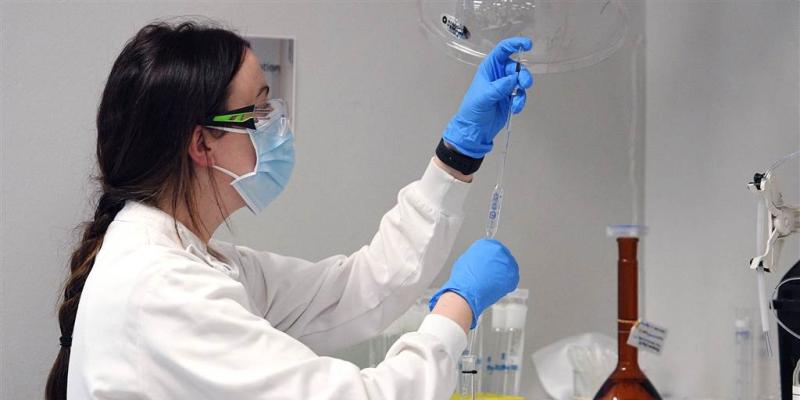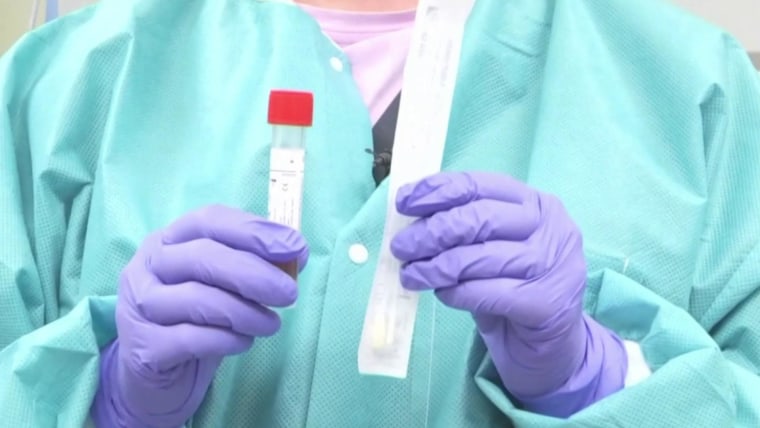Large trials for the Oxford COVID-19 vaccine begin in the U.S.



Phase 3 clinical trials for the much-anticipated Oxford COVID-19 vaccine are set to begin in the United States Tuesday, with participants in Madison, Wisconsin rolling up their sleeves for the injection.
The University of Wisconsin is one of dozens of test sites in the U.S. for the vaccine candidate, made by AstraZeneca in partnership with the U.K.'s University of Oxford. Tuesday's trial will mark the start of the third phase 3 trial in the U.S. for a COVID-19 vaccine, following Moderna and Pfizer.
The beginning of the trial comes as President Donald Trump is exerting pressure to fast-track research on a vaccine, alluding to some sort of approval before the election in early November.
But Dr. William Hartman, an assistant professor of anesthesiology at UW Health and the University of Wisconsin-Madison School of Medicine and Public Health, doesn't expect preliminary data until at least Thanksgiving.
"Our obligation is to make sure that in the end, we have a safe and effective vaccine,"said Hartman, who is the principal investigator for the UW trial.
The first participant to sign up is UW's chief quality officer and an emergency medicine physician, Dr. Jeff Pothof. He's scheduled to get the shot on Tuesday, but is not otherwise involved in the research.
"All of us are just so tired of coronavirus, and I think the vaccine trials are really our best attempt to take offense against the virus," Pothof said. "I just wanted to be part of that solution."

FDA head open to authorizing a COVID-19 vaccine before end of phase 3
Pothof will be one of 250 people enrolled each week for the next eight weeks. Two-thirds of the study participants will receive the actual vaccine, given twice, a month apart. The rest will get a series of placebo shots.
"It takes at least a month to generate the antibodies that we're looking to measure," Hartman said. "At that point, a second injection is given."
Participants must be followed for at least a month after that second shot to measure their levels of antibodies against the coronavirus. With that timeframe in mind, it would be around Thanksgiving before the company has at least preliminary data, Hartman said.
But President Trump has repeatedly pressed for faster work on vaccine research. During his speech last week at the Republican National Convention, he promised the nation "will produce a vaccine before the end of the year, or maybe even sooner."
Researchers will follow the study participants for two years to determine how well the shots work, and how long such protection might last. But they're likely to have a good indication of whether the vaccine is effective enough to warrant emergency use authorization.
The Food and Drug Administration has said an effective vaccine only needs to protect 50 percent of people to be considered effective.
The Oxford vaccine uses a well-known virus, called an adenovirus, which causes the common cold. It's genetically altered so it doesn't make a person sick. Instead, it teaches the immune system how to generate antibodies to attack what's called the spike protein on the surface of the coronavirus. It's that spike protein that gets into human cells, wreaking havoc.
"If we can shut the door on those spike proteins, there is no way for that virus to be able to get into the cells," Hartman said.
AstraZeneca is not the only drugmaker with a potential COVID-19 vaccine. The head of the National Institutes of Health, Dr. Francis Collins, has said that multiple vaccines will be necessary to meet the global demand.
"NIH is committed to supporting several Phase 3 vaccine trials to increase the odds that one or more will be effective in preventing COVID-19 and put us on the road to recovery from this devastating pandemic," Collins said in a news release.
Moderna and Pfizer have already enrolled about 30,000 participants in total for their phase 3 trials. The three companies aim to enroll 30,000 people each to determine if the vaccine is effective against infection with SARS-CoV-2, the virus that causes COVID-19.
And Johnson & Johnson has plans to enroll 60,000 participants for its vaccine candidate.
Enrolling such a huge number of participants — ideally with a wide range of ages and ethnicities — is done to ensure researchers can find rare side effects missed during earlier studies of safety with fewer participants.
"This is why you don't just complete the early trials and say, 'well, nobody died. Everybody looks okay.' You want to carefully analyze and parse this data to ask, 'Are there any surprises here?'" explained Dr. Gregory Poland, an infectious diseases expert and director of the Mayo Clinic's Vaccine Research Group in Rochester, Minnesota.
The AstraZeneca trial will include "diverse racial, ethnic and geographic groups who are healthy or have stable underlying medical conditions, including those living with HIV, and who are at increased risk of infection from the SARS-CoV-2 virus," according to a company press release.
The trial site at UW is likely to enroll a large number of college students who just recently returned to campus for the fall semester.
Having a standard demographic for this one study site — that is, otherwise healthy people in their late teens and early 20s — could be beneficial to researchers. To show that a vaccine really works, the study needs to show that people in the same demographic who were immunized fared better than similar people who got the placebo.
"If we see low or no infection in those who received the vaccine compared to their peers, that would be valuable data to help us understand if the vaccine is effective," Pothof said.

Tags
Who is online
441 visitors
